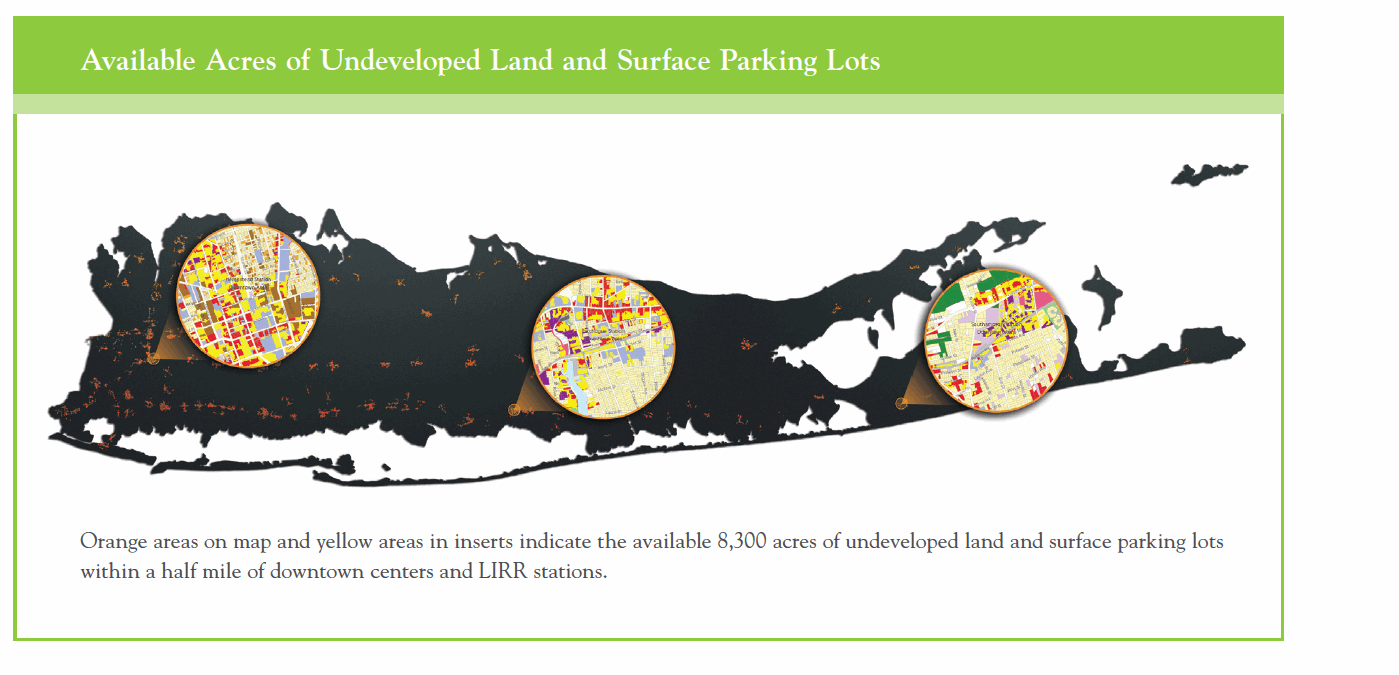REGIONAL PLAN ASSOCIATION
Long Island’s Top 10 Planning Process Issues Impacting Downtown Development
10: No two municipalities function the same.
There is tremendous variability between Long Island’s municipalities—different rules, different processes,different staffing levels. This is a result of the omplex structure of incorporated and unincorporated villages, towns, cities and counties that we have on Long Island.
9: Technology? What’s that?
We provide little to no technology either to manage the process or accept payments. Only three of the surveyed municipalities accepted online applications. And over 80% of Long Island jurisdictions accept only cash or check for fees—no credit cards. Only one jurisdiction accepts payments online.
8: How long will it take to move through the process? Who knows?
70% of jurisdictions surveyed do not set target dates for when planning reviews will be conducted. No one knows how long it takes to complete an approval process. Three-quarters of jurisdictions do not track review times by staff.
7: We build our downtowns for cars.
Almost 75% of the jurisdictions surveyed said that their on-site parking requirements were one of the biggest impediments to downtown development. Yet communities off Long Island that have successfully re-energized their downtowns have limited parking rather than maximized it. The goal was to encourage walkability thus increasing the likelihood of retail success and creating a greater sense of place and identity.
6: We add to the cost of construction.
Less than 50% of villages and only one town offer next-day building inspections. Once construction begins, timely inspections are essential to keep projects on schedule and reduce construction costs.
5: Up-to-date comprehensive plans are essential. Unfortunately, we don’t have many of them.
On Long Island, almost 50% of villages don’t have a comprehensive plan at all and 50% of the towns and cities have an outdated plan. Comprehensive plans are essential to planners and government officials seeking to define what type of development a community wants. Without them, it’s nearly impossible to plan for the future of a community.
4: Up-to-date zoning codes go hand-in-hand with updated comprehensive plans. We could use more of them.
Nearly 50% of the jurisdictions surveyed have not comprehensively updated their zoning codes in at least ten years. Our communities are changing—through demographic shifts, economic tides, the emergence of new building practices. Without updated zoning codes, it is harder to plan for the impact of change on the community.
3: Long Island has the lowest rate of rentals in our region. No surprise since our codes make it hard or downright impossible to build them.
In 45% of the villages, rental units cannot be built without a special permit or cannot be built at all. In 70% of the villages, accessory housing is not allowed.
2: On Long Island, we worry that we’ll build too much. But we should be worrying that we don’t build enough.
We use density caps to focus on “how much is too much” but fail to recognize that without setting minimums of what we must have, we fail to achieve what we set out to create. Minimums and maximums need to be defined. Retail will not flourish in a downtown if you don’t have a large enough population to utilize those services. Not determining the minimum requirement means jeopardizing the vibrancy and economic success that you are striving for.
1: With a little here and a little there, we will realize only a fraction of the potential of our downtowns.
On Long Island, we tend to do things in a piecemeal fashion. Individual projects don’t relate to each other, and can’t reach the critical mass of housing and jobs that Long Island needs. We need a concerted, integrated plan that considers the needs of the community from a variety of perspectives—residents’ wishes, needs for future generations, creating an economically viable region. Without that, we’re going to end up with a new apartment building here, a new business over there, and parking everywhere.
Download full version (PDF): Getting It Done
About Regional Plan Association
www.rpa.org
Regional Plan Association is America’s oldest and most distinguished independent urban research and advocacy group. Now in its 86th year, RPA prepares long range plans and policies to guide the growth and development of the New York- New Jersey-Connecticut metropolitan region. RPA also provides leadership on national infrastructure, sustainability, and competitiveness concerns. RPA enjoys broad support from the region’s and nation’s business, philanthropic, civic, and planning communities.
Tags: Long Island, New York, NY, Regional Plan Association, RPA







 RSS Feed
RSS Feed